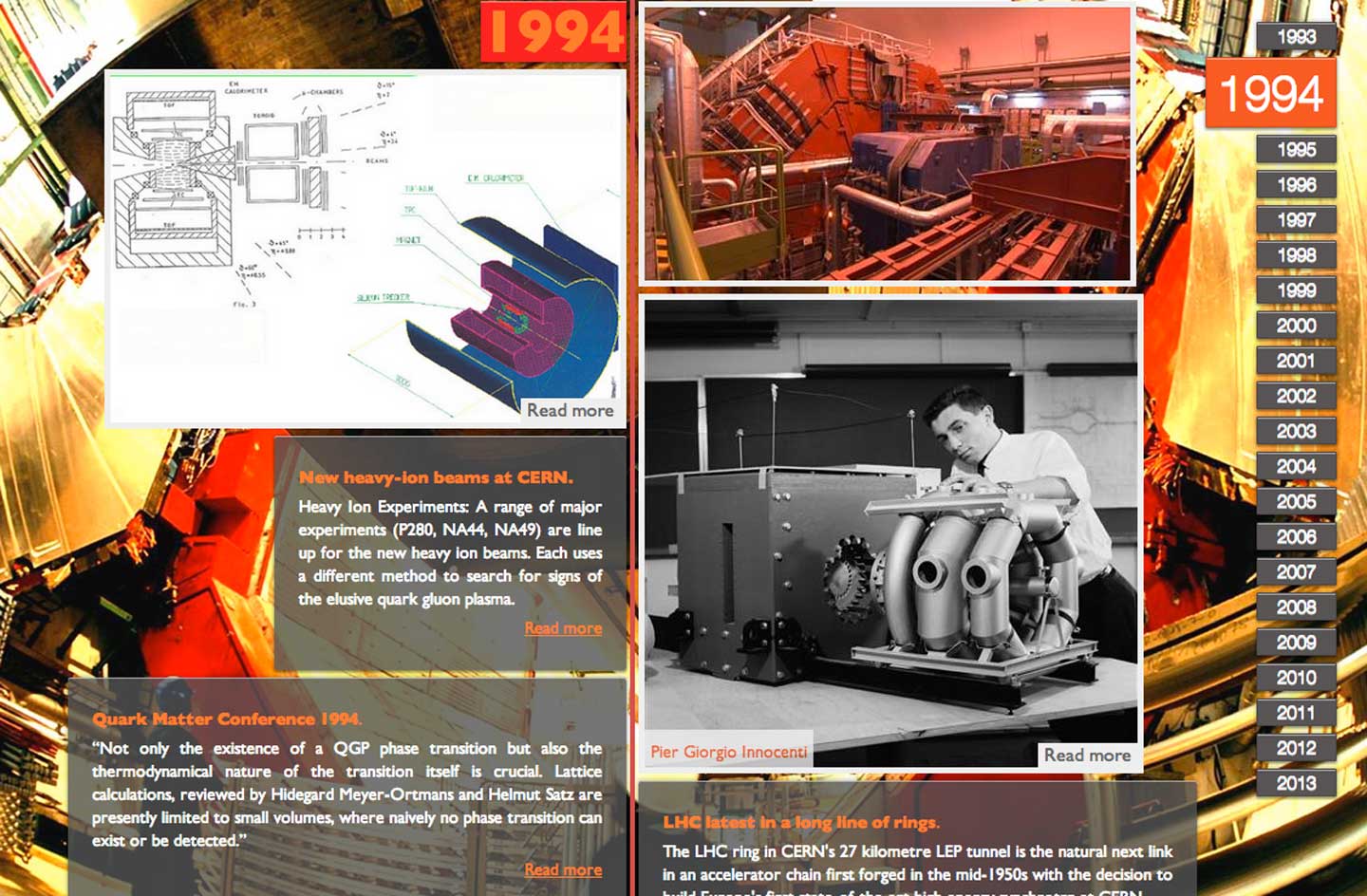Until the current shutdown of the CERN accelerator complex, the 10,000-tonne ALICE detector probed the fundamental structure of matter from a large cavern 100 metres underground near the village of St Genis-Pouilly in France.
The detector, which took a team of more than 1000 physicists, engineers and technicians years to build, is specialized to detect quark-gluon plasma - a state of matter that existed in the earliest moments after the big bang.
To celebrate 20 years of the ALICE project, collaboration member and ALICE Matters editor Panagiotis Charitos – with help from technical student George Lestaris – has built an interactive timeline that showcases the challenges and successes of ALICE since its inception. The timeline draws from and frequently links to original documents from the CERN archives, as well as related publications such as the CERN Courier.
"The aim of the timeline is threefold," says Charitos. "It puts ALICE in the context of other heavy-ion experiments around the world; it connects ALICE physics with theoretical advances in quantum chromodynamics (or QCD); and it serves as a 'thank you' to the thousands of people who worked hard to build detectors, develop software for data collection and analysis, and to ensure the smooth running of the machine."
The timeline shows how new data from experiments at accelerators such as the Super Proton Synchrotron at CERN and the Relativistic Heavy Ion Collider at Brookhaven National Laboratory in the US have affected how ALICE is upgraded – a design constantly evolving to meet new challenges.
The timeline is a media rich webpage based on Django Python web framework.

